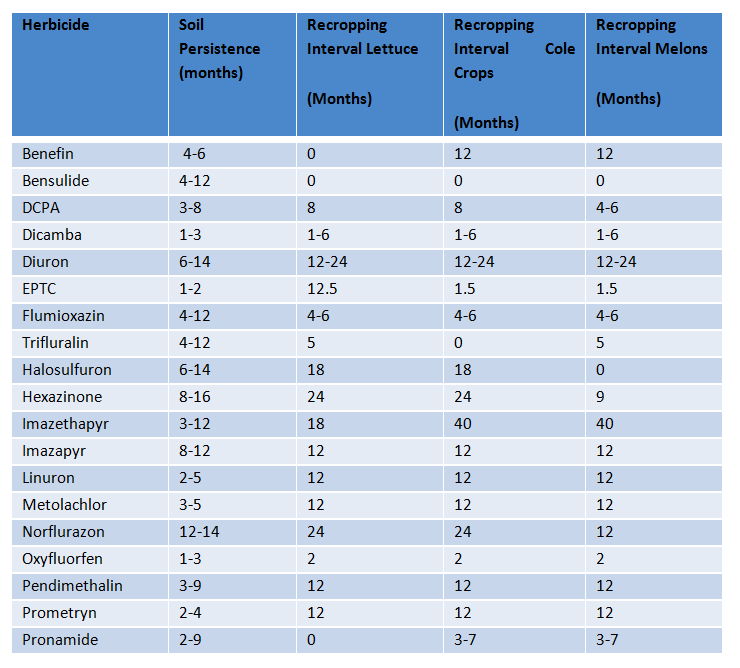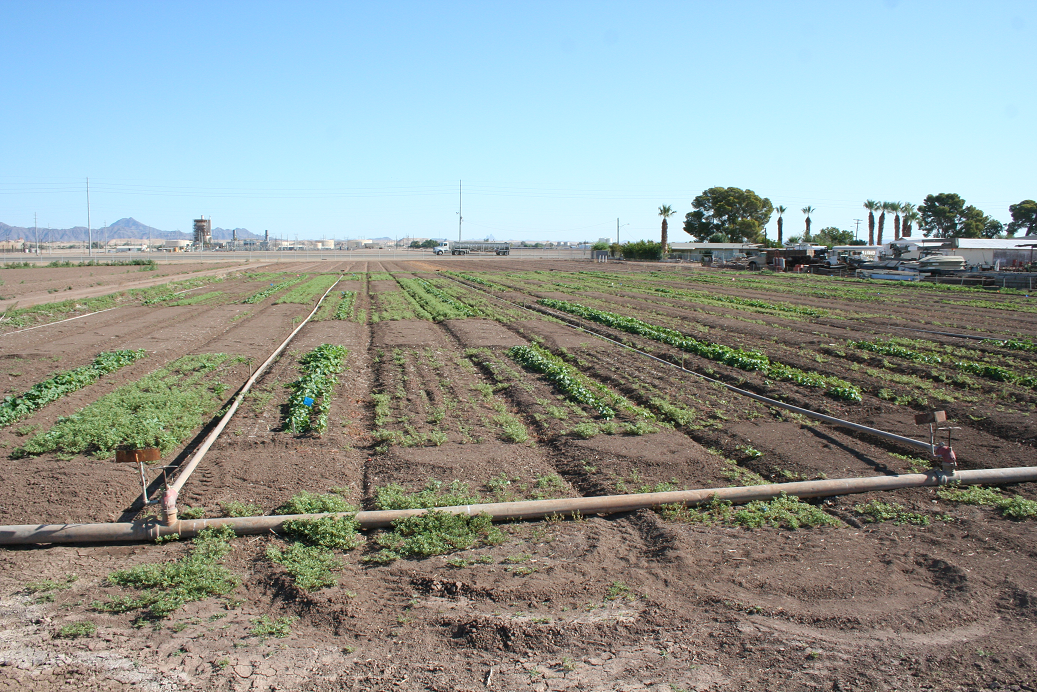
|
|
|
|

|
|||
|
|
|||
|
|
|||
Herbicides that have residual soil activity are very useful in the low deserts, where weed seeds continue to germinate with each irrigation year-round. These herbicides can also be hazardous, however, when sensitive crops are planted into soil where they are still active. Determining the potential for crop injury from herbicides used on previous crops can be difficult. Injury potential is related to several interrelated factors such as soil type, irrigation practices, tillage, environmental conditions, organic matter and other conditions. Injury can vary from field to field, year to year and even be variable within the same field. Rotational crop restrictions on product labels must often cover many diverse conditions and geographic regions and are frequently much longer than needed. The following chart can be used as a general guideline for herbicide persistence. The Recropping intervals that are listed are those that appear on the product label. This may be shorter or longer under local conditions. |
|||
| Back | |||
|
For questions or comments on any of the topics please contact Marco Pena at the Yuma Agricultural Center.
|
|||
|
Home |
Cotton | Veggies |
Forages | Grains
| Citrus |
Crop x Crop Insects | Diseases| Weeds | Pesticides | Economics | News | Weather | Research | Photos | Contacts | General Info. Copyright © 2001 University of Arizona, College of Agriculture and Life Sciences Webmaster: Al Fournier (acis@ag.arizona.edu) |
|||


